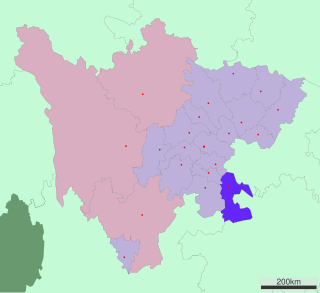Liquor making sites
- 1. Site of LiuLing Workshop, Xushui County, Hebei.
- 2. Site of Lidu Workshop, Jinxian County, Jiangxi.
- 3. Site of Shuijingjie Workshop, Chengdu, Sichuan.
- 4. Site of Cellar Cluster for Luzhou Laojiao, Luzhou, Sichuan.
- 5. Site of Tianyi Workshop for Jiannanchun Liquor, Mianzhu, Sichuan.

Hebei is a province of China in the North China region. The modern province was established in 1911 as Zhili Province or Chihli Province. Its one-character abbreviation is "冀" (Jì), named after Ji Province, a Han dynasty province (zhou) that included what is now southern Hebei. The name Hebei literally means "north of the river", referring to its location entirely to the north of the Yellow River.
Jinxian County is a county in the province of Jiangxi in the People's Republic of China. It lies in the prefecture of Nanchang.

Jiangxi is a province in the People's Republic of China, located in the southeast of the country. Spanning from the banks of the Yangtze river in the north into hillier areas in the south and east, it shares a border with Anhui to the north, Zhejiang to the northeast, Fujian to the east, Guangdong to the south, Hunan to the west, and Hubei to the northwest.



